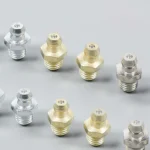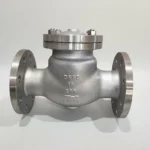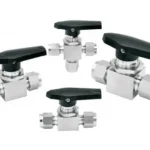Hay algunos factores esenciales que deben tenerse en cuenta a la hora de seleccionar una válvula de instrumento. A continuación se enumeran algunos de los criterios esenciales para la selección de válvulas. Cada aplicación dará mayor prioridad a:
Diseño básico de válvula/envase
Fluctuación de la presión
Consideraciones sobre presión y temperatura
Otros factores clave son los fluidos, las especificaciones y normas, las opciones de diseño del actuador, el análisis del caudal y el tamaño del orificio.
Es fundamental evaluar todos los aspectos del sistema para determinar el diseño adecuado antes de desarrollar las especificaciones de la válvula. Comprender las distintas condiciones de funcionamiento influirá en gran medida en la elección final del diseño.
Diseño de la válvula principal de instrumentos
Comprender los distintos métodos de diseño de las empaquetaduras de las válvulas de contador y los tipos de diseño de válvulas disponibles desempeña un papel importante en el proceso de especificación. En su núcleo básico, la válvula incluye un conjunto de control, como una bola o una aguja, y a veces un accionamiento automático para el funcionamiento de la válvula en lugar de un accionamiento manual. El asiento de la válvula de medición controla el flujo de material, mientras que la empaquetadura limita las fugas entre el asiento y el elemento de accionamiento. El material estructural, la rigidez, la posición del vástago y la correcta selección de la válvula afectan en gran medida al rendimiento global de la válvula. En general, de todos los diseños de válvulas existentes en el mercado, los cuatro tipos de válvulas siguientes se utilizarán para aplicaciones de control de caudal, análisis, pruebas e instrumentación para garantizar la máxima seguridad.
Válvula de bola
Una válvula de bola consiste en un componente esférico utilizado para detener o iniciar el flujo de fluido. Operativamente, cuando el mango de la válvula se gira a la posición abierta, la bola gira para moverse a través del orificio de la bola en la dirección de la entrada y salida de la válvula. Cuando la válvula se cierra, la bola gira de modo que el orificio cierra la abertura de paso del cuerpo de la válvula y el flujo se detiene. La mayoría de los actuadores de válvulas de bola son de acción rápida y sólo requieren un cuarto de vuelta de la maneta de la válvula para abrirla y cerrarla.
Las válvulas de bola para instrumentos más populares tienen una presión nominal de hasta 3.000 PSI, una temperatura de hasta 350 ° F (176 ° C) , y un asiento de PFA (polímero perfluoroalcoxi) para proporcionar conexión simple (en línea) , modo angular de dos vías y de tres vías. Las válvulas de bola de alta calidad tienen un asiento de prueba neumática a una presión de 1.000 PSI con cero fugas de nitrógeno. Los cuerpos de estas válvulas de bola se probarán hidrostáticamente a 3000 psi y los asientos se probarán hidrostáticamente a 2000 psi.
El popular diseño de la válvula de bola está disponible en acero inoxidable 316 y latón, y combina un envasado integral con muestras limpias y precisas, así como un diseño que permite la inserción para un envasado fácil de sustituir.
Doble bloque y válvula de escape
La válvula de alivio de doble bloqueo JPGA o DBBV sustituye a tres válvulas independientes, dos válvulas de aislamiento y una válvula de alivio. Las válvulas de doble bloqueo y escape están aisladas de los procesos y presiones aguas arriba y aguas abajo.
Una válvula doble de aislamiento y escape impide que el fluido del proceso entre en la zona que se está operando. Cuando se abre el flebotomizador, se cierran las dos válvulas de la tubería. Si se produce una fuga de fluido a través de la primera válvula, el purgador drenará antes de presurizar la cámara entre las válvulas aguas arriba y aguas abajo. Si el purgador (que puede ser una válvula de aguja) está bloqueado, la válvula aguas abajo bloqueará el flujo del fluido de proceso.
Válvula de aguja
Las válvulas de aguja utilizan pasadores cónicos diseñados con precisión para abrir gradualmente el espacio y controlar con precisión el caudal. El caudal puede controlarse y ajustarse mediante el uso de una aguja. La válvula de aguja tiene un orificio relativamente pequeño con un asiento cónico largo y un émbolo de aguja en el extremo del tornillo que coincide con precisión con el asiento para cerrar la válvula.
El émbolo se contrae al girar el tornillo de la válvula de aguja, permitiendo el paso del fluido entre el asiento y el émbolo. Sin embargo, cuando el émbolo está totalmente retraído, se puede controlar el ajuste preciso del caudal. Las válvulas de aguja se utilizan habitualmente en sistemas de vacío donde se requiere un control preciso del flujo de gas a baja presión. A menudo se utilizan como parte de otros sistemas de válvulas más complejos.
Las válvulas de aguja para contadores están disponibles con bonete de rosca o integral. La mayoría tienen una presión nominal de hasta 6000 PSI, una temperatura de hasta 4500 °F (2320 °C) , y tienen canales rectos y acodados.
Válvula de retención
Una válvula de retención (también conocida como válvula unidireccional) es una válvula que generalmente permite que un medio (líquido o gas) fluya en una sola dirección.
Las válvulas de retención incluyen válvulas de dos puertos, lo que significa que tienen dos aberturas en el cuerpo, una para la entrada de fluido o gas y otra para la salida del medio.




